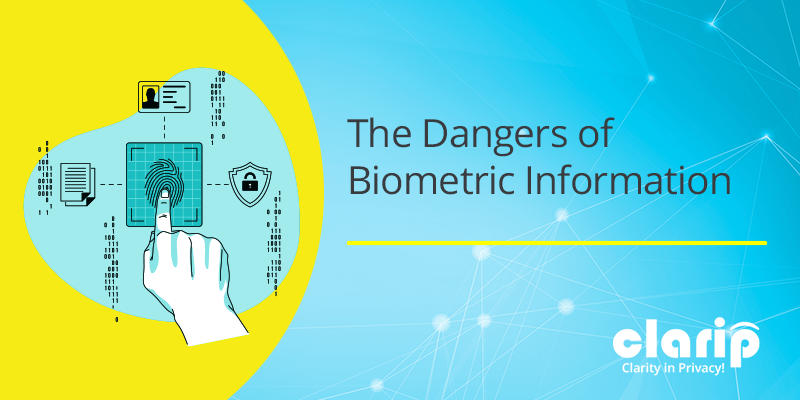The Dangers of Biometric Information

Biometric information includes physiological information and behavioral information. Some of the common types of physiological information that gets collected about individuals is their DNA, fingerprints, hand geometry, iris image, retina image, facial geometry, and facial images. Behavioral information can include an individual’s handwriting, gait, or voice pattern.
All of this information can be dangerous in the wrong hands.
Physiological information is for the most part immutable. You are stuck with what you get and it stays the same or ages predictably along with the rest of your body. That is why things like DNA and fingerprints can be used to identify cold-case criminals decades after their crimes. They are still identifiable by their DNA or fingerprints well after any crime they may have committed. But it’s not just a burden for criminals to have their physiological information out there, it can be harmful for law-abiding citizens as well.
Let’s say, there exists a sequence of genes that makes people with that set of genes crave salt. Then, some data broker comes along, gathers genetic data on millions of people, identifies those in the data set with that genetic predisposition towards salt and sells the list of salt-cravers to all the players in the food industry. People with the salt-craving now become micro-targeted and now have to through sheer force of will to not always given into their natural craving that is being reinforced constantly by greedy businesses, just looking to make another sale.
The particularly scary thing about physiological information is that it typically doesn’t change. Once certain traits are known about an individual, those traits aren’t likely to change.
Behavioral information can be dangerous in the wrong hands, too. There is some recent research showing that an individual’s voice patterns can be used to identify whether or not they suffer from mental illness.
Imagine going into a job interview and everything goes great. You meet all the requirements. You love everything about the employer. You are well-qualified and believe you are a lock for the job. However, they never make an offer. The employer very well could have identified (based on your voice pattern) that you suffer from depression. Based on their understanding of depression and work-productivity they decide not to offer you the job. The end result is depressing.
The problem generally with biometric information is that it is often too dangerous in the wrong hands.
When collecting data, every business should think through the data that it collects. What are the risks associated with collecting this data? What happens if we suffer a data breach? What will happen to the individuals whose data we have collected, if their information becomes publicly available? Sometimes the minimally valuable data to your company can be very harmful for the data subjects about whom the data pertains. Keeping this in mind, Clarip provides Data Risk Intelligence Scans. We help businesses identify what personal information they collect and how much exposure they have with maintaining that data. We also offer fully-automated data subject request fulfillment, consent management, vendor management, automated data mapping, and many more data privacy compliance solutions. Visit us at www.clarip.com or call us at 1-888-252-5653 to learn more.
Email Now:
Mike Mango, VP of Sales
mmango@clarip.com
Other Articles on this Topic:
Consumers Prefer Biometric Authentication
What Your Company Needs to Know About Regulation of Biometric Data
Roadmap to Biometric Governance Readiness
Regulation of Biometric Data under the General Data Protection Regulation

 Data Risk Intelligence
Data Risk Intelligence Automated Data Mapping
Automated Data Mapping Do Not Sell/Do Not Share
Do Not Sell/Do Not Share Cookie Banner Solutions
Cookie Banner Solutions Consent & Preferences
Consent & Preferences Data Rights Requests
Data Rights Requests
